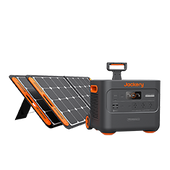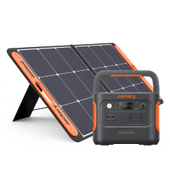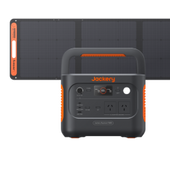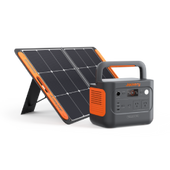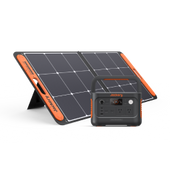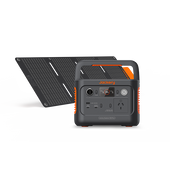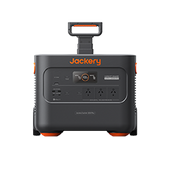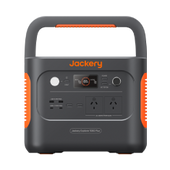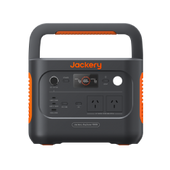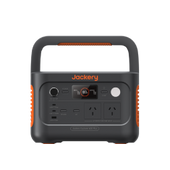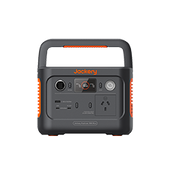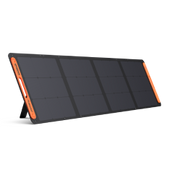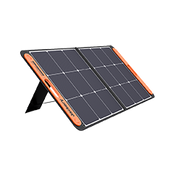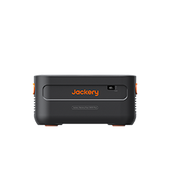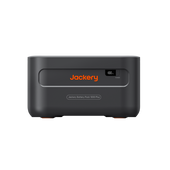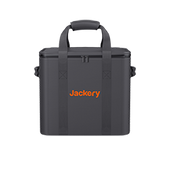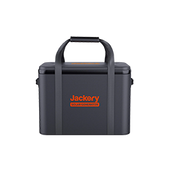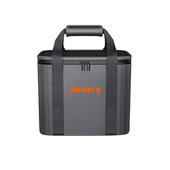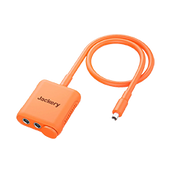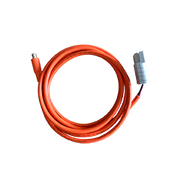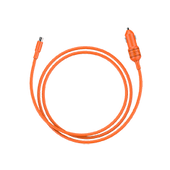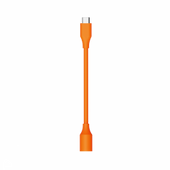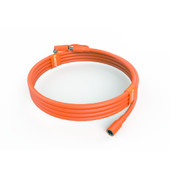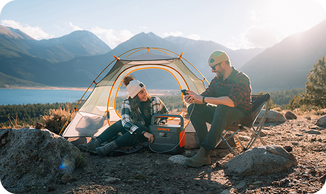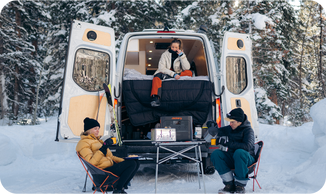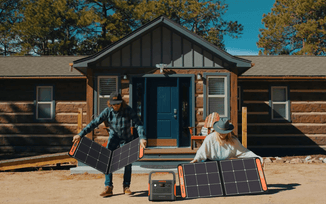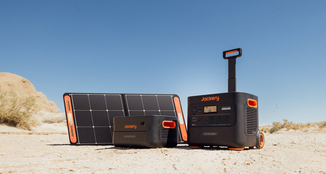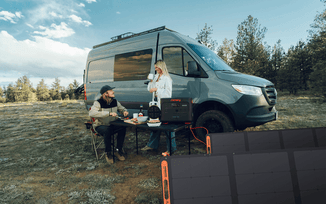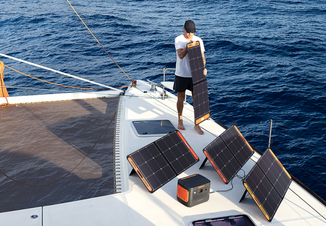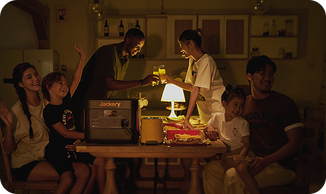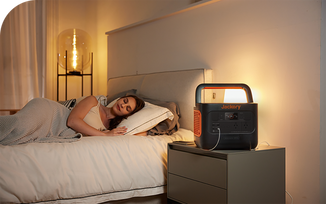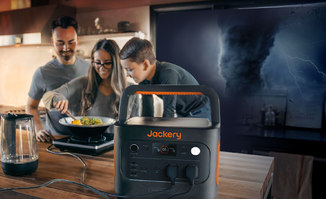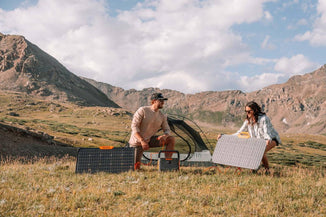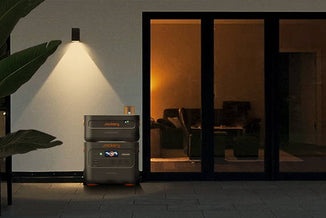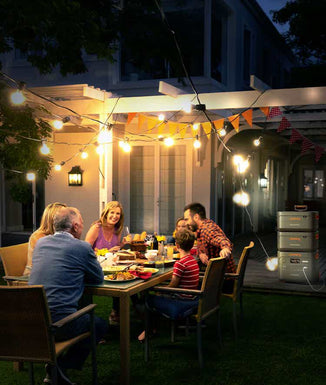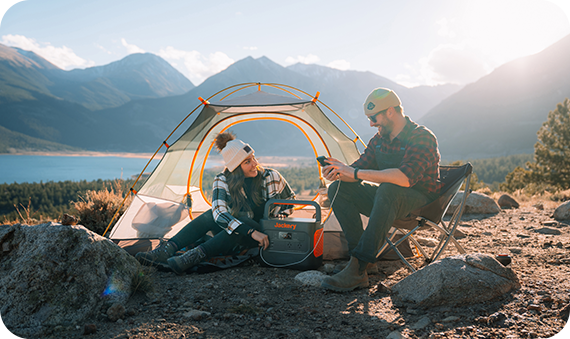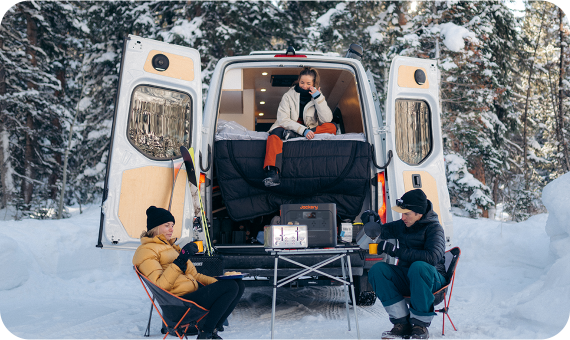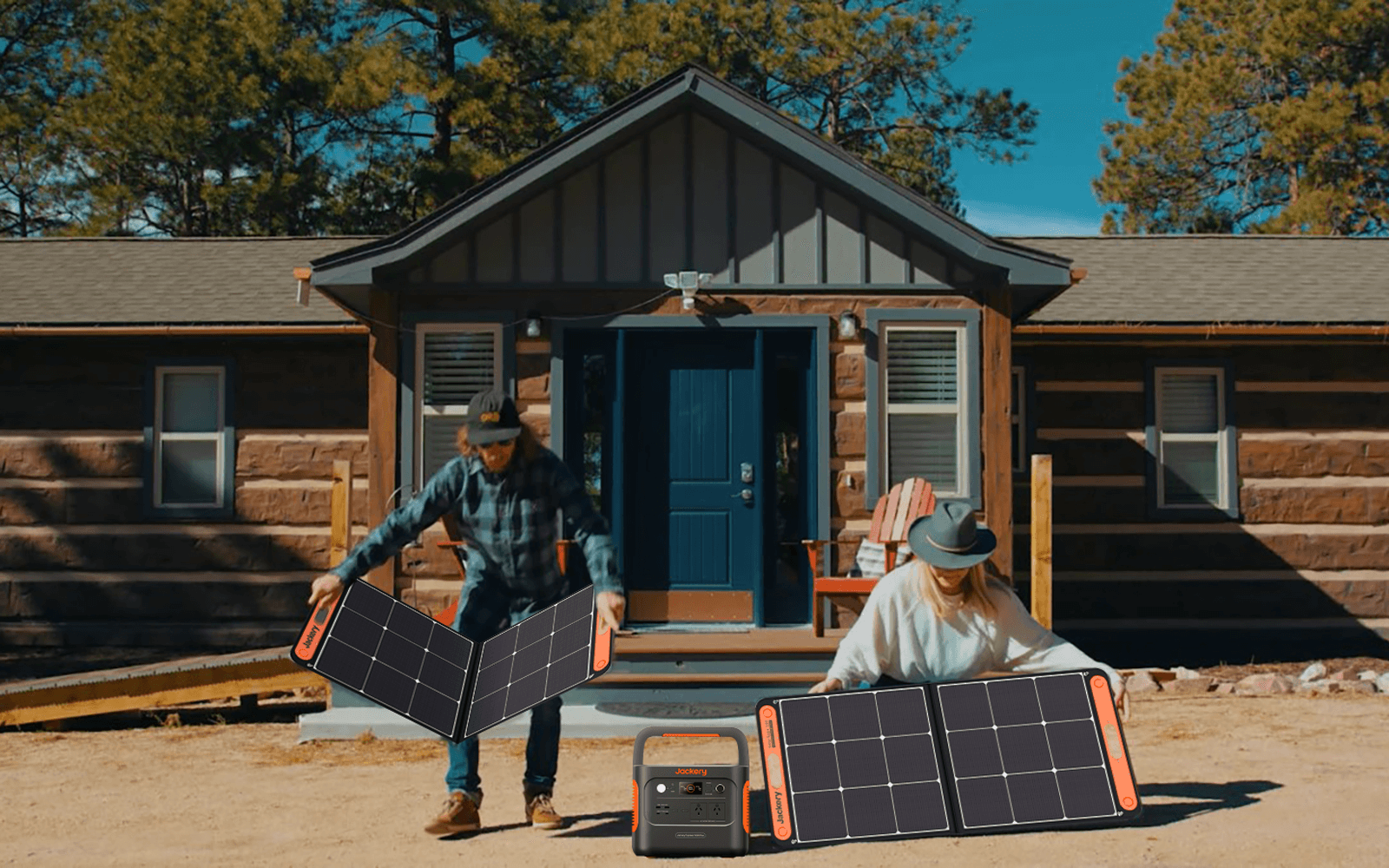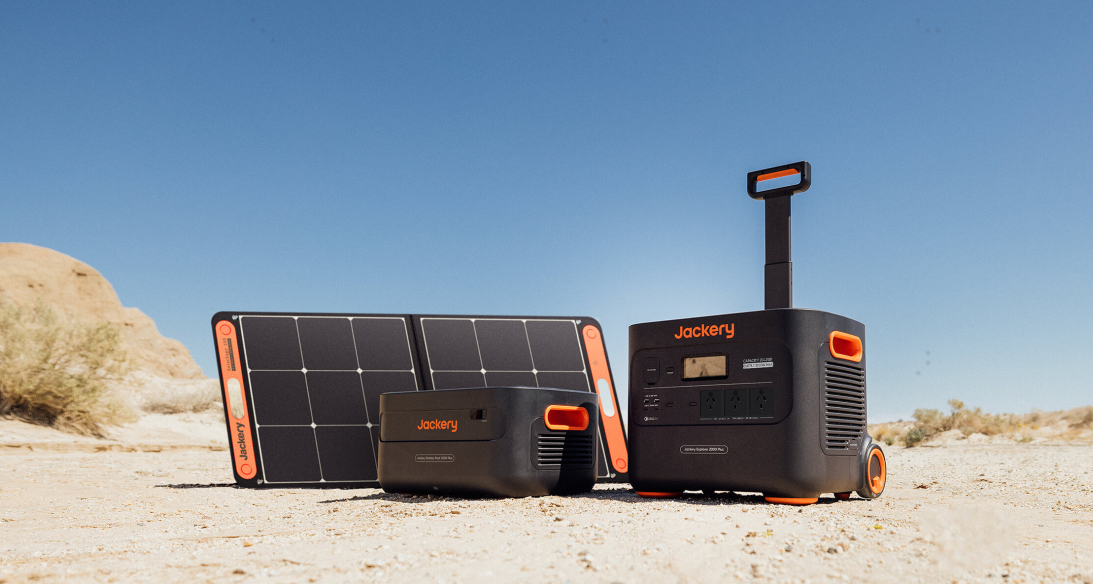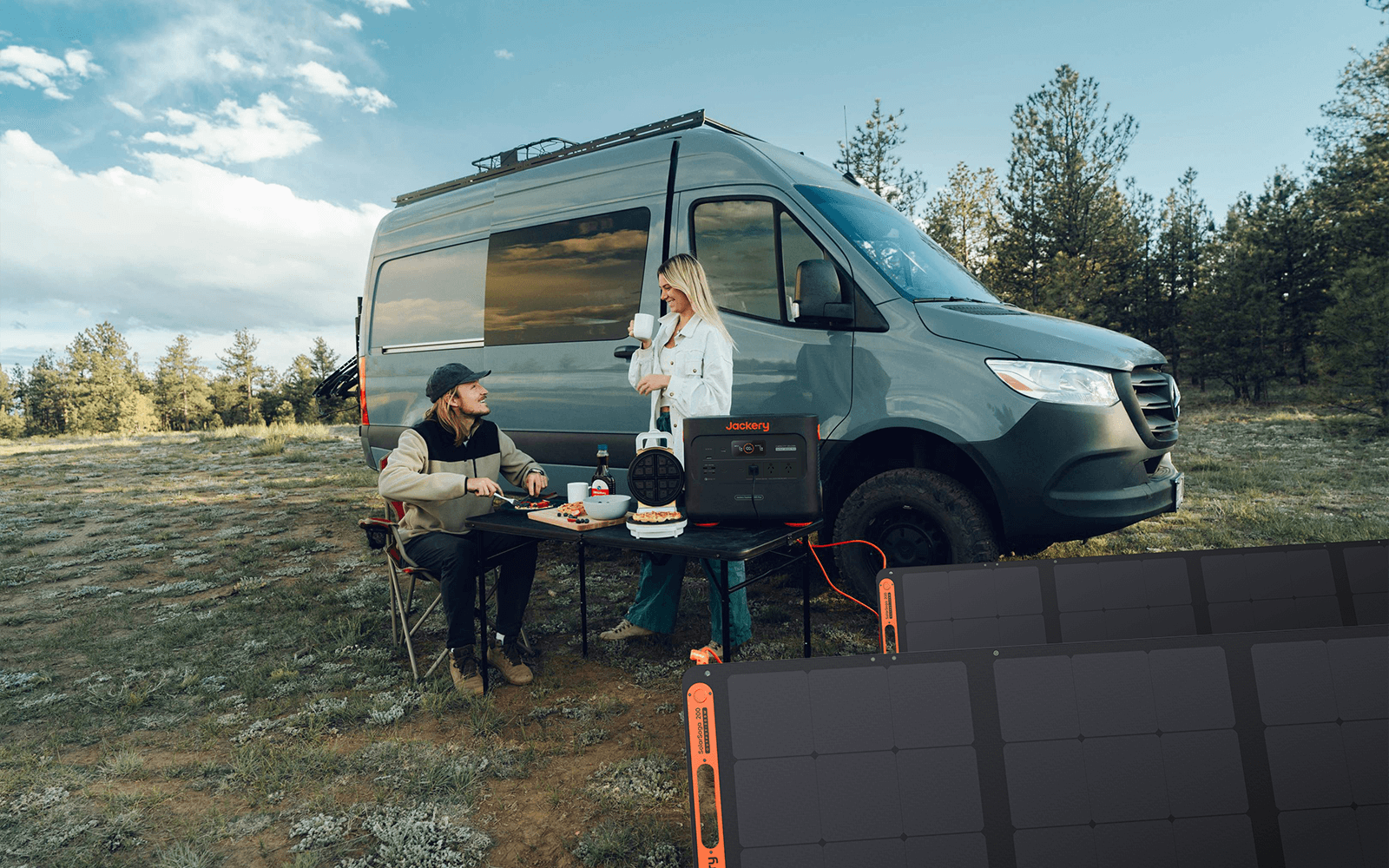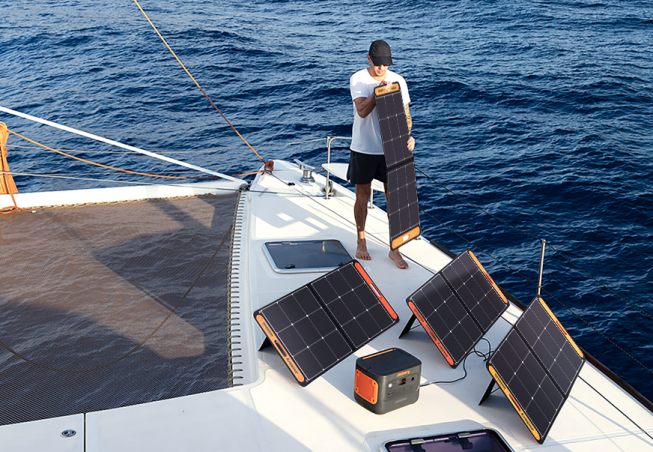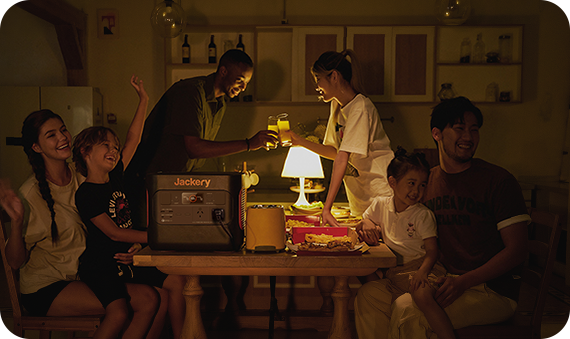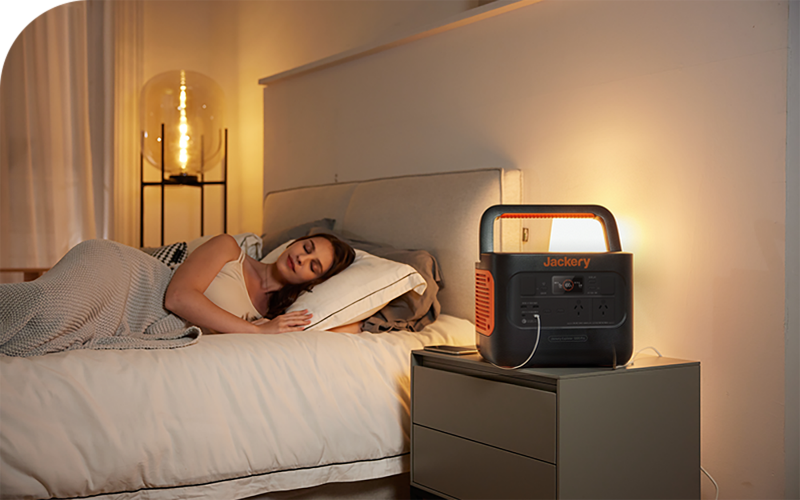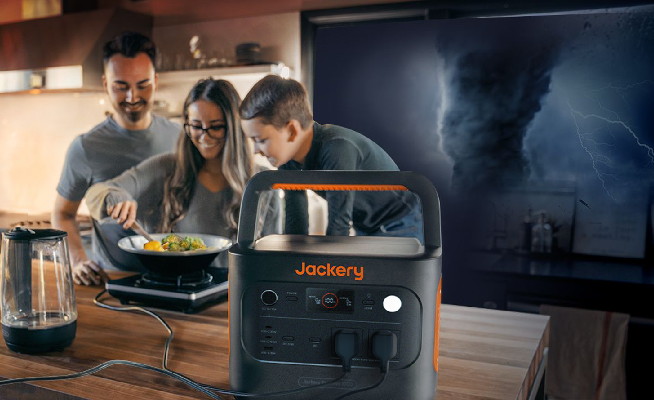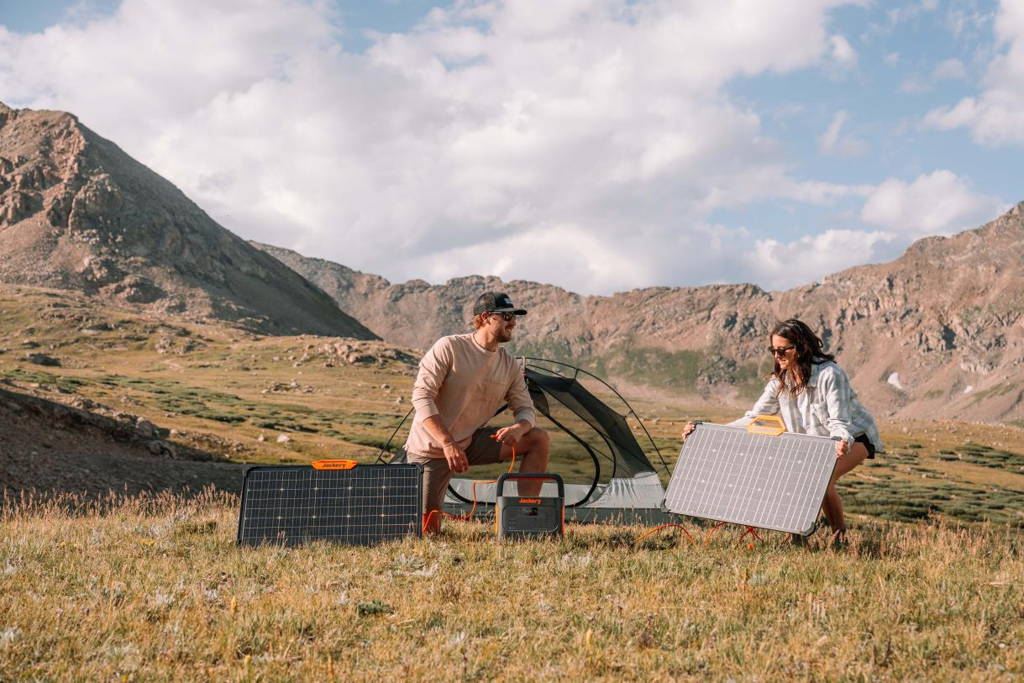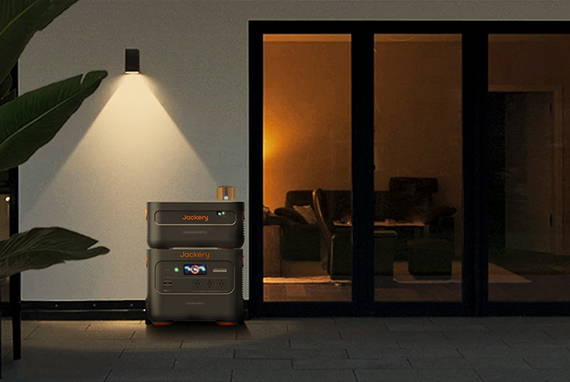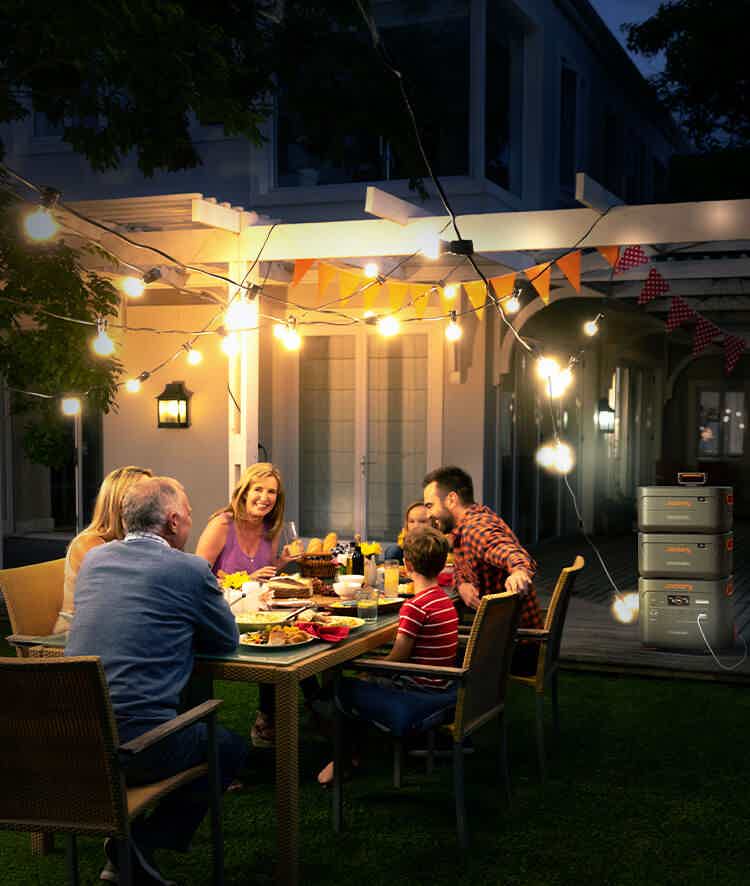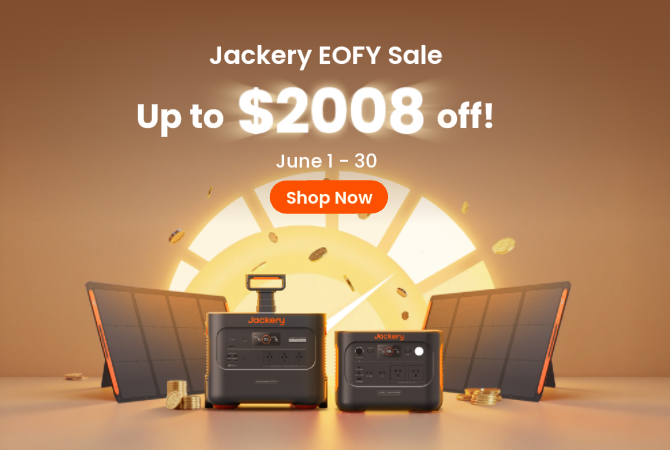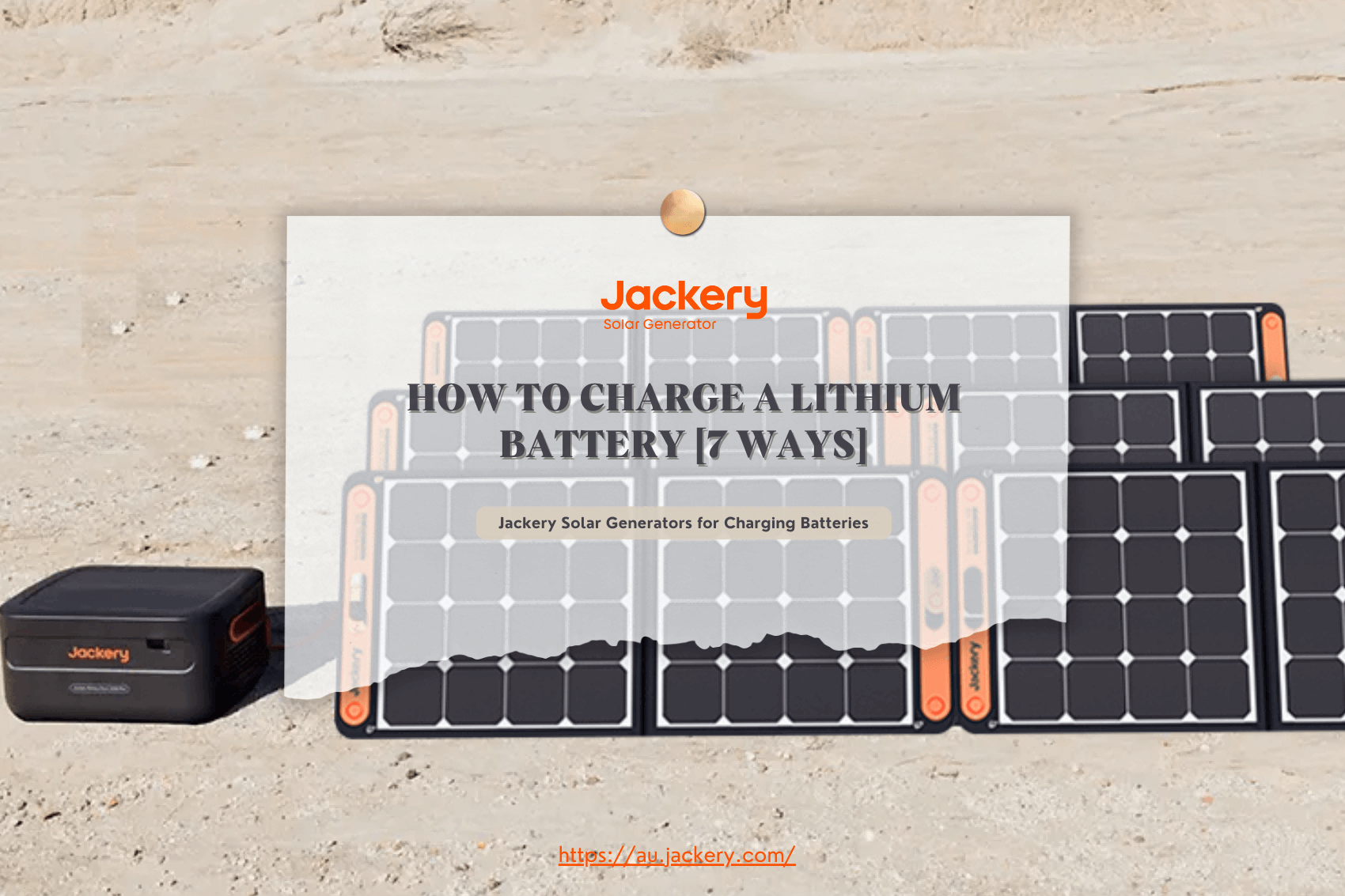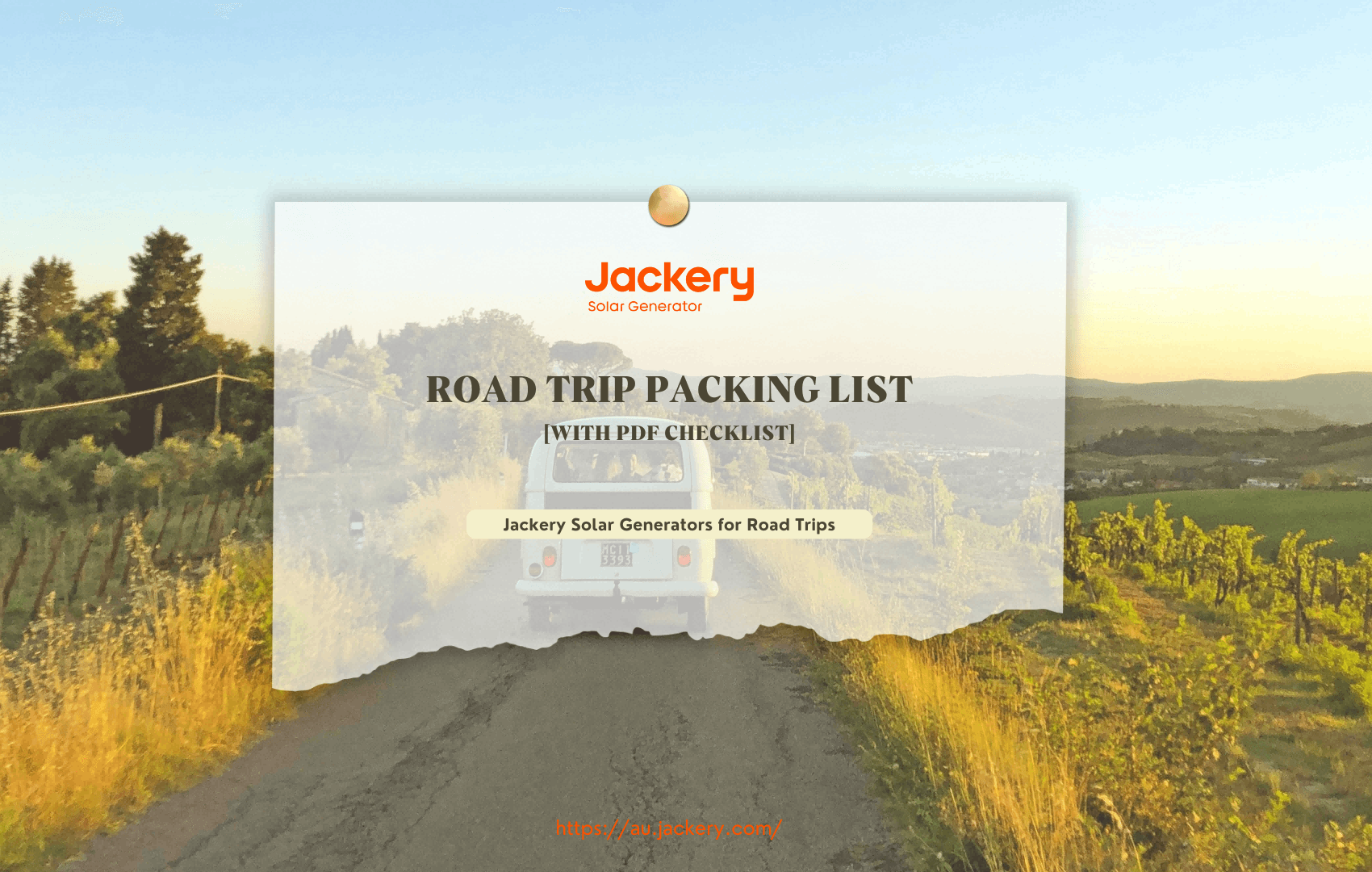|
Key Takeaways: |
|
- Practice and flight exercises before using these drones will be beneficial to you. - Drones that include an onboard camera or built-in camera and those that allow you to attach your own are the two most popular available. - The regulatory agency that regulates drone use in Australia is the Civil Aviation Safety Authority (CASA). - Prepare your shot and your settings. For the most flattering lighting, the golden hour, which occurs between sunrise and sunset, is the ideal time to photograph. - We recommend the Jackery Solar Generator 1000 v2 as the most suitable drone photography companion for powering electronics outdoors. |
What Is Drone Photography?
Drones, also known as uncrewed aircraft or UAVs, have seen tremendous technological advancements that have produced gadgets for every price range. Most of us utilise our drones for leisure or as a hobby, aside from commercial, agricultural, and military purposes. They enable us to take pictures and record videos from a whole different angle.
A GoPro camera can be mounted on certain drones. Some models also include a camera capable of capturing photographs at a resolution of 5472 × 3648 pixels.
Practice and flight exercises before using these drones will be beneficial to you. Even when you think you're ready, you still need to be aware of the guidelines. Before you begin, you must adhere to these legal requirements. To register, you might even have to undergo a flight test.
Why Do We Use Drone Photography?
The use of drones for photography has many benefits. Numerous businesses require drone photography. Drone photography can, therefore, be lucrative. You may also emphasise your services as a licenced professional and set yourself apart from the hobbyists in the market because clients need to engage licenced drone pilots.
Another chance to include something special in your packages is drone wedding photography. If you are a licenced drone operator, you can charge other wedding photographers more for drone photography and videos. Since you can take distinctive pictures that photographers without drones cannot equal, it can frequently also creatively distinguish your shots.
What Is Drone Videography?
It is the most practical approach to using a drone camera for drone wedding videography. A fantastic technique to boost the production value of your wedding films and photos is to include aerial footage. Using drone footage to set the scene may create a feeling of place and is a great way to present a dynamic view of the wedding day.
While using drone footage in videos is fun, avoiding disturbing wedding guests with a loud drone can be challenging. While producing the highest calibre drone images and films possible, remember how disruptive you might be to the wedding celebration.
Drones can be used for commercial operations in addition to wedding photography and videography. There is a need for drone photographers who can make money, whether interviewing athletes or taking aerial photographs of a building site.
Key Factors to Look for When Choosing a Drone
Choosing the right drone for photography depends on several factors. When comparing the models currently on the market, your intended use should be your top priority.

Types of Drones: Drones that include an onboard camera or built-in camera and those that allow you to attach your own are the two most popular available. Drones with built-in cameras tend to be larger and may not have particularly high-resolution cameras, which can affect the quality of your images.
Conversely, smaller drones that let you attach your own camera—like a GoPro—might be more straightforward to operate because you already know how to manage your camera and just need to learn how to fly.
Your Ability to Fly a Drone: One of the most important things to consider is how well you can fly a drone. Sturdier, lighter, and cheaper drones are available for beginning drone photographers. They aren't as expensive as heavier and more advanced drones either because they have fewer features. Look for a drone that matches your skills.
Features of Your Drone: You must also be aware of its capabilities. For instance, certain drones can only be flown indoors. Additionally, some drones have lights so that nighttime photography is possible. Some people can fly farther than others. After selecting what you want to achieve with the drone and examining the features of the models you are considering, pick the one that best suits your needs.
Camera Quality: Look for at least 4K videos and 12MP+ photos for high-quality shots.
Capability to Shoot in Raw: The option to shoot in raw can be crucial for photographers regarding image post-processing. The issue of high contrast settings and the need for flexible editing are identical when capturing pictures from the sky, as anyone familiar with landscape photography will immediately discover. Some older and less costly drone models might only shoot in JPEG.
However, most newer models will come with built-in raw file types. Purchasing a raw-capable setup will be the best option if you want to utilise the drone to capture high-quality photos immediately.
Sensor Size and Megapixels: How many megapixels the sensor will produce and how well it can handle low light levels are quality fans' next most frequently asked questions. A drone's sensor, which ranges from 30 MP in high-end versions like the Inspire 2's Osmo camera to 2 MP in the Force1 Quadcopter, can significantly impact both the cost and image quality.
Anyone who wishes to produce files for professional clients or reproduce their images as fine art should choose a model that supports 20 MP stills. Most 20 MP drone cameras come with a 1" CMOS sensor in addition to a larger file, which enables you to increase the ISO in low light conditions and significantly reduces the amount of noise in the picture. Choosing a drone camera with a resolution of 12 MP or less will still enable you to take beautiful pictures with decent quality if your main goal is only to share your photos on social media.
Versatility: Drone photography is inherently daring, and a common topic of conversation is how much room the drone will take up in your luggage. The drone community agrees that the new Mavic 3 offers the best portability and image quality balance. It's difficult to top the ease of deployment in any circumstance, as it weighs only 5.51 pounds and has a 20 MP sensor. Nevertheless, if image quality is your first priority, you should probably look at a larger, less expensive model that produces comparable photographs.
Flight Performance and Stability: A three-axis gimbal helps maintain smooth footage. Through the use of GPS and obstacle avoidance, flight precision and safety are improved. Drones with higher-end components are better able to withstand greater gusts.
Battery Life and Range: It is preferable to have a flight time of at least twenty to thirty minutes for each charge. A more extended range enables greater flexibility; you should aim for a range of at least 5-10 kilometres.
Budget: The entry-level models, which range from $300 to $700, are suitable for novices but have a lower camera quality and stability (for example, the DJI Mini-series). The mid-range ranges from $800 to $1,500 and is characterised by superior sensors, extended battery life, and advanced functionality (for example, the DJI Air series and the Autel Evo Lite+).
Professional (at least $2,000): Drones of the highest quality, such as the DJI Mavic 3, the Autel Evo 2 Pro, and the Inspire series, which have sensors measuring more than one inch and offer long flight periods.

Drone Safety Regulations
The regulatory agency that regulates drone use in Australia is the Civil Aviation Safety Authority (CASA). The CASA's DroneFlyer website explains all the laws, and they stipulate that violating these rules can result in fines of up to $9000. The primary guidelines that the Civil Aviation Safety Authority (CASA) has established for small recreational drones are as follows:
- You can only fly the drone during daylight hours, and it must remain within your line of sight.
- You are not permitted to fly in adverse weather conditions or into clouds.
- You are only permitted to fly a single drone at a time.
- You are not permitted to fly over people (e.g., during festivals, busy beaches, streets, or sporting events) or within 30 metres of people (unless they are involved in drone piloting).
- You are forbidden to fly more than 120 metres(400 feet).
- You must maintain a safe distance from emergency services, such as fires, police, or rescue activities.
Additionally, you are not allowed to fly within a distance of 5.5 kilometres from a controlled aerodrome, such as an airport. If you observe an aircraft landing in the vicinity, such as a helicopter, you must land your aircraft.
The guidelines apply to recreational users. In addition, you are required to have an aviation reference number and to tell CASA before your flight if you are flying to make a profit (for example, you intend to sell the photographs or generate money from uploads on YouTube). A licence and certification may be required of you in certain circumstances. Details can be found at CASA.
How to Do Drone Photography?
If you want to capture stunning drone photography in Australia, here are some steps you can follow to ensure safety, legality, and high-quality shots:
Before flying, familiarise yourself with the Civil Aviation Safety Authority (CASA) regulations provided in the last section.
Choose the right drone for photography using the factors provided in section 2.
Choose locations with unique landscapes, good lighting, and legal airspace.

Prepare your shot and your settings. For the most flattering lighting, the golden hour, which occurs between sunrise and sunset, is the ideal time to take photographs. Settings for images taken with a camera include RAW format (which allows for more effective editing), for the least amount of noise, ISO was kept between 100 and 200, while the shutter speed was between 1/100 and 1/500; crisp photos can be achieved with these settings. When shooting in bright daylight, always use ND filters to regulate exposure.
If you want to prevent jerky shots, you need to fly smoothly and gently. It is recommended to position significant topics in an off-center manner to adhere to the norms of composition and the Rule of Thirds. The viewer's attention is directed in a specific direction by leading lines, such as roads and rivers. It is possible to take beautiful photographs of water by utilising symmetry and reflections. Explore the world from a variety of perspectives. When capturing beaches and forests, top-down photos are the best option.
Landscapes can be given a sense of depth through the use of low-altitude photography.
What you do after the drone is packed away might be just as crucial as actually capturing the picture, whether that means editing something out of the photograph or color-correcting a collection of photos you're not happy with.
Post-production is nearly always necessary for drone photos to look their best. The problem is that drone image editing requires as much practice and education as taking it. Editing pictures taken from above, considering the variations in lighting and angles, requires a whole new set of skills, even if you're already an expert in post-production editing.
Try a variety of programmes, such as Photoshop, which has varied user interfaces and areas of concentration, to determine which one will assist you in getting the desired result. Although it may take a lot of time and is frequently tiresome, every skilled drone photographer is also an excellent editor.
Tips and Tricks for Drone Photography
Now that you are familiar with the process of doing drone photography, here are some tips and tricks for doing drone photography in Australia:
When you leave the city, you will find that there are significantly fewer restrictions on the usage of drones than in inhabited areas. The majority of airlines do not allow rechargeable lithium batteries to be carried in with checked baggage, so bring your used batteries in your carry-on.
You should have spares, such as propellers, with you because it is a time-consuming process to replace them while you are on the road. If you do not obtain the consent of the individuals you are recording, such as by photographing or filming them, you may find yourself in legal problems.
Bring ND filters with you in order to reduce the glare caused by the sun in Australia!
Best App for drone photography: If you are researching drone photography, no other program is more suitable than Google Earth. This gives you a glimpse of a region's appearance from above. When it comes to scouting the nearby locations, this is a fantastic method.
Drone makers also develop applications for drones. This kind of programme is available from DJI and is called DJI Fly. It provides you with a broad camera view and various flight tutorials. A second operator is able to fly the machine if it is required to do so. Additionally, it allows you to chart a path for it to follow.
Jackery Solar Generator for Drone Photography
The Jackery Solar Generator 1000 v2 can be a game-changer for drone photography, especially for those venturing into remote locations or needing extended shooting sessions. It combines Explorer 1000 v2 with SolarSaga 100W to turn sunlight into electricity.

Drone batteries have limited flight times. The Jackery 1000 v2 allows you to recharge drone batteries on location, significantly extending your shooting sessions, particularly in areas without access to mains power. This is crucial for capturing remote landscapes, wildlife, or time-lapses where access to power is limited or non-existent.
Besides powering drones, the Jackery 1000 v2 can help you charge phones, laptops, lights, and more electronics. Outdoor shoots can take you to diverse environments. The Jackery 1000 v2 provides a reliable power source, regardless of location or weather conditions (as long as you have sun to recharge). Unlike noisy gas generators, the Jackery solar generator operates silently.
|
Drone Photography Electronics |
Running Time |
|
Drone (90W) |
25 Times |
|
Camera (8.4W) |
47 Times |
|
Laptop (150W) |
5.3H |
|
Light (10W) |
35.1H |
|
GPS Device (60W) |
11.7H |
(*The working hours are only for reference; the actual working hours depend on your usage.)
The Most Lightweight & Compact 1kWh LPF Power Station
The Jackery Explorer 1000 v2 Portable Power Station is engineered for mobile energy solutions. Weighing about 23.8 lbs and equipped with a compact foldable handle, it is more lightweight and portable than conventional items. Besides, it is 20% smaller and 10% lighter than mainstream products.
Your Drone Photography Companion
The Explorer 1000 v2 portable power station provides an impressive 1500W output, which is 50% greater than earlier models. It can seamlessly operate various drone photography electronics, such as drones, laptops, lights, and more. Moreover, it includes USB-A/C ports, supports up to 100W dual PD charging, and simultaneously charges several devices.
Do Not Disturb Nature
Function at a library-quiet level of less than 22 dB, devoid of disruptive noise, solely exhibiting pure energy. In contrast to gas generators, the Jackery Explorer 1000 v2 generates no emissions, protecting your health and the environment. It is ideal for tranquil outdoor retreats, nocturnal emergencies, or indoor auxiliary power and is a clean, silent substitute for fossil fuels.
More Than Fast Charging
Do not remain reliant on a singular power source. With AC wall charging, you can fully recharge this Solar Generator in under 1.7 hours or use the optional emergency boost through the Jackery App for an astonishing 1 hour, ideal for urgent requirements. Utilise solar energy with two SolarSaga 100W panels for a complete recharge in 7.5 hours, rendering it suitable for off-grid camping or eco-friendly travel.
Higher Conversion Rate Panels
The Jackery SolarSaga 100W Solar Panel efficiently converts solar energy into renewable power using a monocrystalline solar blanket. Its solar conversion efficiency of 23.7% makes it particularly suitable for outdoor applications and unforeseen power interruptions. The ETFE-laminated case enhances the solar panel's durability and weighs 4.69 kg. The item is characterised by its lightweight design, foldability, IP65 waterproof rating, and portability, making it suitable for off-grid excursions.
Drone Photography FAQs
The following are the frequently asked questions about drone photography in Australia:
1. How much does drone photography cost?
The cost of drone photography varies according to location, duration, intricacy, and the photographer's experience. Hiring a professional drone photographer in Australia typically costs between $150 to $500 per hour, with full-day shoots ranging from $1,000 to $3,000 or more.
Basic real estate or landscape photography may cost between $200 and $500 each session. However, more advanced aerial cinematography or commercial projects (such as weddings, events, or corporate marketing) can cost more than $5,000, mainly if high-end drones and post-production editing are used.
DIY drone photography prices are determined mainly by the equipment used, with starter drones costing $500 to $1,500 and professional drones with high-quality cameras costing $2,000 to $5,000 or more. Additional costs may include ND filters, extra batteries, editing software, and commercial licence fees.
2. How profitable is drone photography?
Since drone services have relatively minimal operating expenses, they typically offer large profit margins. A drone photographer, for example, can charge $150 to $500 per hour for their skills, with minimal recurrent costs aside from software subscriptions and equipment maintenance.
3. What do I need to do drone photography?
To shoot drone photos, you'll need a high-quality drone with a camera, like a DJI Mini 4 Pro for novices or a DJI Mavic 3 Pro for experts. You'll also need extra batteries, ND filters, high-speed SD cards, and a carrying case for longer shots.
Understanding drone regulations is critical, particularly in nations such as Australia, where CASA enforces altitude limitations, no-fly zones, and commercial licencing. Flight planning software, such as OpenSky, can assist you in checking for restricted airspace. Mastering camera settings (ISO, shutter speed, RAW format) and composition skills (rule of thirds, leading lines) will improve your photographs.
Post-processing software, such as Adobe Lightroom or Photoshop, is required for editing. If you intend to fly commercially, you may need a Remote Pilot Licence (RePL) and public liability insurance.
4. How much does drone photography cost in Australia?
Drone photography prices range from base aerial photography hourly rates of AUD 100.00 to daily costs that are limited to AUD 800.00. Travel and lodging are included in this price for projects lasting several days.
5. Is it worth buying a drone for photography?
Drones are the key to the sky for anyone hoping to pursue a career in aerial photography or videography. These inexpensive, portable wonders offer viewpoints that can only be replicated with costly tools like dollies or cranes, which is why they are now a mainstay on the equipment lists of many web designers.
Final Thoughts
A vast array of textures, compositions, and astoundingly fresh viewpoints on travel photography have been made possible by drones. And Australia is a fantastic location to escape it all, thanks to its distinctive landscapes.
If you bring your drone down under, there are plenty of opportunities to take some breathtaking pictures, from the Outback's red-dirt horizons to the Great Barrier Reef's delicate lacework seen beneath turquoise waters. However, there are some drone groans, particularly from residents. Drone photography is strictly controlled in Australia; therefore, even if using a drone to take pictures and videos is entirely legal, you still need to follow the laws.

